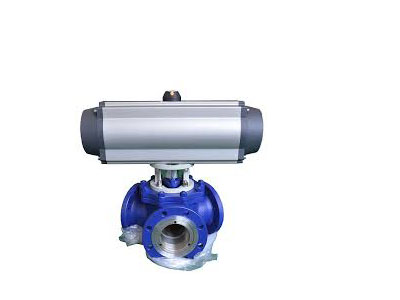Key Takeaway
Using a proportional valve involves connecting it to a control system that provides the necessary control signal. The valve should be installed in the correct orientation, following the manufacturer’s guidelines for flow direction and mounting position. Ensure that the electrical connections are secure and that the control signal is calibrated to match the valve’s specifications.
Once installed, the proportional valve can be used to regulate flow or pressure by adjusting the control signal. Regular maintenance, such as cleaning and inspection, is essential to ensure optimal performance and longevity of the valve in the system.
Basic Operation of Proportional Valves
Proportional valves operate by converting electrical input signals into proportional mechanical movement of the valve element. The core component is an electromagnetic actuator that precisely positions the valve spool or disc based on the control signal magnitude. This allows for infinite positioning between fully closed and fully open.
The valve’s control electronics process the input signal and adjust the current to the actuator accordingly. This creates a magnetic force that moves the valve element against a spring force, providing precise position control. Feedback sensors may be incorporated to ensure accurate positioning.
Advanced proportional valves include features such as closed-loop control, which continuously monitors and adjusts valve position to maintain desired output. This ensures accurate and stable operation even under varying system conditions.

Installation and Setup Procedures
Installing a pressure relief valve (PRV) involves several critical steps to ensure proper function and system safety. First, the correct type and size of the valve must be selected based on the system’s pressure and flow specifications. Installation begins by positioning the valve at an appropriate location within the system, typically at the point where pressure may exceed safe limits. For spring-loaded PRVs, this is often directly on the pipeline or vessel. Pilot-operated PRVs require more complex installation, including setting up external pilot lines and ensuring that control connections are securely in place.
Before the valve is fully installed, it should be calibrated to ensure it opens at the correct pressure. This is done by adjusting the set pressure, which is typically achieved by turning an adjusting screw for spring-loaded PRVs or configuring the pilot valve for pilot-operated types. It is essential that this adjustment is done accurately to avoid over-pressurization or premature opening, which could lead to system inefficiency. Additionally, it is important to check that all connections are leak-free and that the valve is in optimal working condition before commissioning.
Once the valve is installed and calibrated, it should undergo a test run to ensure it operates properly under pressure. This typically involves pressurizing the system and monitoring the valve’s response to pressure changes. Regular maintenance, including recalibration and inspection for wear and tear, is crucial for maintaining the valve’s reliability over time. Proper installation and setup ensure that the PRV will function as intended, providing safety and stability to the system.
You May Like to Read
Common Applications and Use Cases
Proportional valves find their application in various industries, particularly in systems requiring precise control over fluid dynamics. Some common use cases include:
1. Hydraulic Systems: Proportional valves are used to control hydraulic pressure and flow, ensuring smooth and efficient operation of machinery like excavators and presses.
2. Pneumatic Systems: In applications like automated assembly lines, proportional valves regulate airflow, adjusting the speed and force of pneumatic actuators.
3. Process Control: Industries like chemical processing or water treatment use proportional valves to control flow rates, ensuring accurate dosing or pressure management.
4. Automotive Industry: In vehicles, proportional valves are utilized for controlling braking systems and adjusting suspension dynamics in real-time.
These applications show how versatile proportional valves are in industries that demand accuracy, efficiency, and real-time adjustments.
Maintenance and Troubleshooting Tips
To ensure the longevity and efficiency of proportional valves, regular maintenance is essential. Here are some tips:
1. Regular Inspections: Periodically check for signs of wear or damage, particularly in seals, actuators, and feedback systems.
2. Cleanliness: Contaminants like dust or debris can clog or damage internal components. Keep the valve and surrounding area clean to avoid malfunctions.
3. Monitor Signal Integrity: Ensure the control signals remain stable and within the correct range. Fluctuating signals can lead to erratic valve behavior.
4. Lubrication: Some proportional valves have moving parts that require lubrication. Refer to the manufacturer’s guidelines for the correct type and frequency of lubrication.
5. Troubleshooting: If the valve isn’t operating as expected, check for common issues such as electrical signal errors, blockages in the valve body, or improper calibration. Use diagnostic tools like multimeters to check for electrical faults.
Safety Considerations When Using Proportional Valves
Proportional valves are crucial in many industrial settings, but proper safety protocols must be followed to avoid accidents. Here are essential safety considerations:
1. Pressure Relief: Before working on the valve, always relieve the pressure from the system to avoid accidental injuries due to pressurized fluid.
2. Electrical Safety: Since proportional valves often rely on electrical signals, always ensure that the electrical components are properly insulated and grounded. Never work on the valve while the system is powered.
3. Temperature Monitoring: High-pressure or high-temperature conditions can cause valve components to malfunction. Monitor system temperature regularly to prevent damage.
4. Proper PPE: Always wear appropriate personal protective equipment (PPE), including gloves and safety glasses, when handling or maintaining proportional valves.
By taking these safety precautions, engineers can prevent accidents and ensure smooth operation of proportional valves in any industrial setup.
Conclusion
Using a proportional valve effectively requires understanding its operation and control mechanisms. These valves offer variable flow control, making them ideal for applications requiring precise regulation of fluid or gas.
Proper setup involves connecting the valve to an appropriate control system and calibrating it to the desired flow parameters. Regular maintenance and monitoring are also crucial to ensure optimal performance and longevity, ultimately enhancing the efficiency of the entire system.
